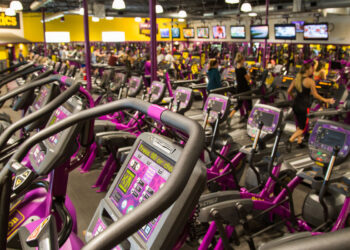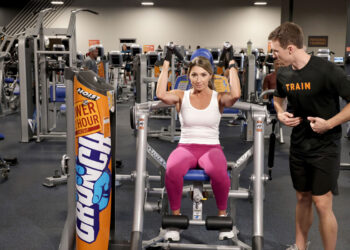 “Renovations, renovations, renovations.” To some, that phrase reminds you of a drill sergeant telling you what you need to do in order to compete with the new guys around the corner. To others, it brings about a sigh of despair, reminding you of something that absorbs more time and money than you want to think about right now.
“Renovations, renovations, renovations.” To some, that phrase reminds you of a drill sergeant telling you what you need to do in order to compete with the new guys around the corner. To others, it brings about a sigh of despair, reminding you of something that absorbs more time and money than you want to think about right now.
Fortunately, neither reaction needs to exist. Here are a few steps to help you utilize your time and money efficiently to survive a club renovation.
Know what and why to renovate: There are two major reasons for renovating. One is bringing in new members, and the other is getting existing members to come back.
Sounds like a renovation can kill two birds with one stone, right? Not always. For example, if you renovate your reception area and it looks new and fancy, new members will see it as new and fancy. However, existing members could view it one of two ways. Either they see you are re-investing and that’s good, or they see you are spending money (which could result in raised rates) and they wish you’d invested it elsewhere.
So when you are deciding what to renovate, make sure you know your desired audience. If you need more members, target the areas that will sway their decision to join your club — reception areas and locker rooms, for example. If you’re attempting to please existing members, ask for their opinions on where they’d like to see reinvestments made. The key is to make sure you are spending money to get the most return.
Fix club flow problems first: In your club, the flow makes sense to you because you’re there every day. However, it might not make sense to members or prospects. Small, broken-up areas leave potential members trying to figure out where they are during sales tours, instead of paying attention to what you are offering. From a member’s point of view, here are a few things to keep in mind when thinking of a club flow sequence.
First impressions are important: What is the first thing the prospect sees that makes them say, “I really need to join this club?” In addition, prior to meeting the sales person, where does the prospect wait, and what do they experience while waiting? During the tour, is the circulation clear? If so, a sales person can easily show prospects all that your club has to offer. Finally, where is the best place to comfortably “close the deal?” Hopefully, it’s at the end of the tour.
Reduce clutter: Clutter is like visual noise. Overtime things like dead plants, old file cabinets and mismatched benches find their way to the corners of spaces, which becomes their final resting place. Clear it all out. Take exceptional time to scrutinize the front desk area. This is your first impression. It should be clean and inviting.
Develop an awesome color palette: If you are renovating, always assess who your demographics are. If you are in a hip urban setting, your palette should represent that, and you should look to fashion for inspiration. If your club is in a beach community, then look to nature for inspiration. The point is to have your club reflect your area so that it is comfortable to those you are trying to attract.
Last tip for surviving a renovation: Make it clear to your membership what you are going to do and always celebrate the small steps. Let your members know that you did it for them, even if it’s just a note that says, “Come check out the recently painted Group X room.” It lets them know it’s done and ready for their enjoyment.
Bryan Dunkelberger is a principal for S3 Design and has designed health clubs for over 15 years. His firm specializes in designing clubs that maximize the member’s experience.
Stay ahead in the fitness industry with exclusive updates!
Emily Harbourne is the former assistant editor of Club Solutions Magazine.










